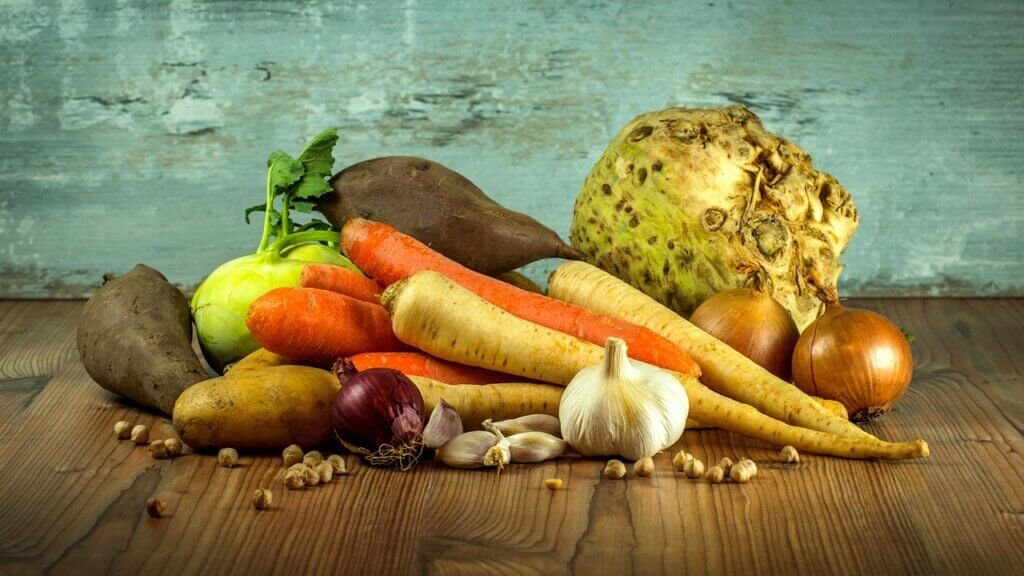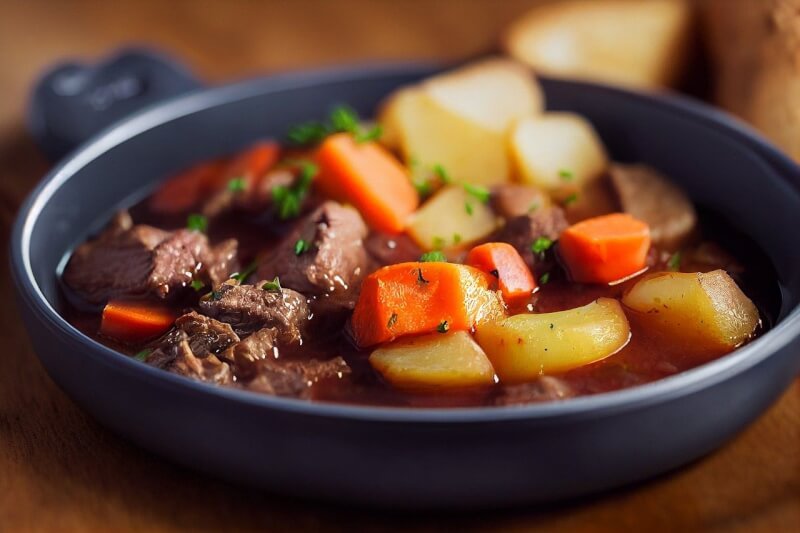If you’re craving a hearty and satisfying meal, look no further than a delicious meat stew. But how do you make a good one? With tender chunks of meat, flavorful herbs and spices, and a rich, savory broth, making a good meat stew may seem intimidating. However, fear not! In this article, we’ll guide you through the simple steps to create a mouthwatering meat stew that will leave you and your loved ones asking for seconds. So grab your apron and get ready to impress with your culinary skills!

Choosing the Right Meat
When it comes to making a delicious meat stew, choosing the right type of meat is crucial. The meat you select will greatly impact the flavor and texture of the stew. Start by selecting the cut of meat that is best suited for stewing. Cuts such as chuck roast, brisket, or stew meat are ideal choices as they have the perfect balance of meat and fat.
Selecting the Cut
Choosing the right cut of meat is essential for a flavorful and tender meat stew. Opt for cuts that have a good amount of marbling, which refers to the small streaks of fat running through the meat. Marbling adds moisture and flavor to the stew, making it more succulent. Cuts like chuck roast and brisket are known for their marbling and are perfect for creating a rich and flavorful stew.
Consider Marbling and Fat Content
While marbling adds flavor and moisture to the stew, it’s important to strike the right balance with the fat content. Too much fat can make the stew greasy, while too little can result in a dry and tough stew. Look for cuts that have a moderate amount of fat, as this will melt during the cooking process and contribute to the richness of the stew.
Opting for Leaner Meats
If you prefer a leaner option, you can still create a delicious meat stew by using lean cuts such as sirloin or top round. While these cuts may not have as much fat or marbling, they can still result in a tasty stew. Just ensure to cook them gently and for slightly less time to prevent the meat from becoming tough and dry.
Preparing the Meat
Before you start cooking, it’s important to prepare the meat properly to ensure a tender and flavorful stew. There are a few key steps to follow when preparing the meat for your stew.
Trimming Excess Fat
While some fat is desirable for flavor, trimming off any excess fat from the meat is essential. Too much fat can make the stew overly greasy and unappetizing. Use a sharp knife to carefully remove any visible fat, but be sure to leave some fat intact as it will add flavor and moisture to the stew during the cooking process.
Cutting the Meat into Cubes
To ensure even cooking and tender meat, it’s important to cut the meat into uniform cubes. Aim for cubes that are around 1 to 2 inches in size. This will allow the meat to cook evenly and will result in tender and flavorful chunks in your stew.
Seasoning with Salt and Pepper
Before adding the meat to the stew, be sure to season it with salt and pepper. This will enhance the flavor of the meat and help to create a delicious base for your stew. Sprinkle the salt and pepper evenly over the meat cubes, ensuring that each piece is coated.

Choosing the Vegetables
While meat may be the star of the show in a stew, the vegetables play a crucial supporting role. They add flavor, texture, and balance to the stew. When selecting vegetables for your stew, consider a combination of flavorful, aromatic, and root vegetables to create a well-rounded and satisfying dish.
Selecting Flavorful Vegetables
Choose vegetables that have a robust flavor and can hold up well to the long cooking process of a stew. Some popular choices include onions, garlic, celery, and bell peppers. These vegetables add depth and complexity to the stew and will infuse it with a delicious aroma.
Including Aromatic Vegetables
Aromatic vegetables are those that release fragrant aromas when cooked, enhancing the overall experience of the stew. Vegetables like carrots, leeks, and fennel are excellent choices for adding a subtle, yet distinctive aroma to your meat stew. The combination of aromatic vegetables and spices will create a tantalizing scent that will make your mouth water.
Adding Root Vegetables
Root vegetables are a staple in meat stews as they add texture, sweetness, and earthy flavors to the dish. Carrots, potatoes, turnips, and parsnips are commonly used root vegetables in stews. They have a hearty nature and can withstand long cooking times without losing their shape and texture.
Adding Flavor Enhancers
To take your meat stew to the next level, consider incorporating flavor enhancers that will add depth and complexity to the dish. These ingredients can elevate the overall flavor profile and make your stew truly unforgettable.
Using Bouillon Cubes or Stock
Adding a concentrated stock or bouillon cubes is a great way to infuse your stew with robust flavor. These flavor enhancers are packed with savory goodness that will enrich the meat and vegetables. Choose a stock or bouillon flavor that complements the type of meat you are using, such as beef, chicken, or vegetable.
Incorporating Tomato Paste or Sauce
Tomato paste or sauce can bring a tangy and slightly sweet element to your stew. It adds depth of flavor and helps to balance the richness of the meat. Consider stirring in a tablespoon or two of tomato paste or a can of tomato sauce to enhance the overall taste of your stew.
Including Worcestershire Sauce
Worcestershire sauce is a secret weapon when it comes to adding a depth of umami flavor to your meat stew. A few dashes of Worcestershire sauce will intensify the savory notes and add a unique richness that will keep your taste buds wanting more.

Creating Layers of Flavor
To create a truly memorable meat stew, it’s important to build layers of flavor throughout the cooking process. This can be achieved through various techniques and ingredients that enhance the taste profile of the stew.
Sautéing the Meat and Vegetables
Before adding the liquid to your stew, take the time to sauté the meat and vegetables. This step helps to develop depth and richness in the stew by caramelizing the meat and vegetables, adding a hint of sweetness and intensifying the overall flavor. Sauté the meat until it’s browned on all sides, then remove it from the pot before sautéing the vegetables until they’re slightly softened.
Deglazing the Pot with Wine or Broth
After sautéing the meat and vegetables, the bottom of the pot may have browned bits stuck to it. Don’t let these flavorful remnants go to waste! Deglaze the pot by adding a splash of wine or broth and using a wooden spoon to scrape up the browned bits. This will add an extra layer of complexity to your stew and ensure all the delicious flavors are incorporated.
Incorporating Herbs and Spices
Herbs and spices are key players in enhancing the flavor of your meat stew. The combination of the right herbs and spices can take your stew from good to exceptional. Popular choices for stews include bay leaves, thyme, rosemary, paprika, and cumin. Experiment with different combinations to find the perfect blend that suits your taste preferences.
Adding Liquid and Simmering
After building the foundation of flavors, it’s time to add the liquid to your stew and let it simmer to perfection. This step ensures that the meat becomes tender and allows the flavors to meld together seamlessly.
Choosing the Right Liquid
The liquid you choose for your stew will greatly impact its overall taste. Options include broth, stock, wine, beer, or a combination of these. The choice of liquid depends on personal preference and the flavor profile you want to achieve. For a rich and traditional stew, opt for a beef or vegetable broth. For added complexity, consider using a combination of broth and red wine.
Covering the Meat with Liquid
To ensure the meat becomes tender and infused with flavor, it’s important to cover it with enough liquid. The liquid should just barely submerge the meat and vegetables. This will allow the stew to simmer and cook evenly, resulting in succulent and melt-in-your-mouth meat.
Simmering on Low Heat
Once your stew is simmering, it’s important to let it cook on low heat. This slow and gentle cooking method ensures that the meat becomes tender and the flavors have time to develop. Simmer the stew for at least 1-2 hours, or even longer if using tougher cuts of meat. The longer you let it cook, the more flavorful and tender the stew will become.
Adjusting the Seasonings
Before serving your meat stew, it’s important to taste and adjust the seasonings to ensure a perfectly balanced and flavorful dish. This step allows you to fine-tune the flavor profile and make any necessary adjustments.
Tasting and Adjusting Salt and Pepper
Start by tasting the stew and assessing the salt and pepper levels. Add a pinch of salt or a sprinkle of pepper if needed. Remember to season conservatively, as it’s always easier to add more salt and pepper than to take out an excessive amount.
Balancing the Flavors with Other Seasonings
If you find that the stew is lacking in flavor or needs more complexity, consider adding additional herbs, spices, or flavor enhancers. You can experiment with different combinations to achieve the desired taste. Add a touch of paprika for smokiness, a sprinkle of cayenne pepper for heat, or a squeeze of lemon juice for acidity. Enhance the flavors until you achieve a well-balanced and delightful stew.
Adding Sweetness or Acidity
If your stew tastes slightly flat or one-dimensional, consider adding a touch of sweetness or acidity to brighten the flavors. A teaspoon of sugar or a drizzle of balsamic vinegar can do wonders in enhancing the taste profile of the stew. Taste as you go and continue adjusting until all the flavors harmonize.
Cooking Techniques
There are multiple cooking techniques that can be used to create a delicious meat stew. Each method offers its own unique advantages and can be chosen based on personal preference and availability of equipment.
Slow-Cooking in a Dutch Oven
One popular method for cooking meat stew is to use a Dutch oven. This heavyweight pot with a tight-fitting lid allows for slow and even cooking. The Dutch oven helps to retain moisture and ensures that the flavors are deeply concentrated. It can be used on the stovetop or in the oven, making it versatile and convenient.
Using a Slow Cooker or Crockpot
A slow cooker or crockpot is another excellent option for making a meat stew. This appliance allows you to set it and forget it, as it cooks the stew at a low and steady temperature for several hours. The slow cooking process ensures that the meat becomes tender and the flavors meld together beautifully. Additionally, using a slow cooker allows you to go about your day while your stew cooks to perfection.
Braising the Meat
Braising is a cooking technique that involves searing the meat, then slowly cooking it in liquid. This method is perfect for tougher cuts of meat that require longer cooking times to become tender. By braising the meat, you allow the flavors to develop and intensify, resulting in a robust and tender stew.
Thickening the Stew
If you prefer a thicker stew, there are a few different techniques you can use to achieve the desired consistency. These methods will help to create a rich and velvety texture that coats the meat and vegetables.
Using Flour or Cornstarch
The most common way to thicken a stew is by using a mixture of flour or cornstarch. Create a slurry by whisking together equal parts flour or cornstarch with cold water until smooth. Slowly pour the slurry into the simmering stew while stirring continuously. Allow the stew to cook for a few more minutes until the desired thickness is reached.
Creating a Roux
A roux is a mixture of fat and flour that is used to thicken sauces and stews. Begin by melting butter or heating oil in a separate pan, then adding an equal amount of flour. Stir the mixture continuously over medium heat until it turns golden brown. Gradually whisk the roux into the stew, allowing it to simmer and thicken.
Adding Mashed Vegetables
For a healthier and more natural way to thicken your stew, consider adding mashed vegetables. Cook some of the root vegetables separately until soft, then mash them into a smooth puree. Stir the puree into the stew, allowing it to simmer and thicken. This method adds a subtle sweetness and thickens the stew without the need for additional ingredients.
Serving and Storing
Once your meat stew is cooked to perfection, it’s time to serve and enjoy. However, there are a few important considerations for both serving and storing your stew.
Choosing the Right Accompaniments
When serving your meat stew, consider pairing it with suitable accompaniments. Fresh crusty bread, rice, mashed potatoes, or buttered noodles all make excellent choices to soak up the flavorful broth. You can also garnish the stew with fresh herbs or a dollop of sour cream for added richness.
Allowing the Stew to Cool Before Storing
Before storing any leftovers, it’s essential to allow the stew to cool down to room temperature. Rapid cooling can lead to condensation, which can result in soggy vegetables and an unpleasant texture. Once the stew has cooled, transfer it to airtight containers for storage.
Properly Storing Leftovers
To ensure your meat stew stays fresh and delicious, store it properly in the refrigerator or freezer. If refrigerating, place the stew in airtight containers or sealable bags and store for up to 3-4 days. For longer-term storage, freezing is the best option. Portion the stew into freezer-safe containers or bags and store for up to 3 months. Be sure to label the containers with the date to keep track of freshness.
Making a good meat stew requires attention to detail and a thoughtful approach. By choosing the right meat, selecting flavorful vegetables, and incorporating the right seasonings and techniques, you can create a hearty and delightful dish that will satisfy any appetite. So gather your ingredients, pour yourself a glass of wine, and get ready to embark on a culinary journey with a warm and comforting meat stew. Enjoy!


